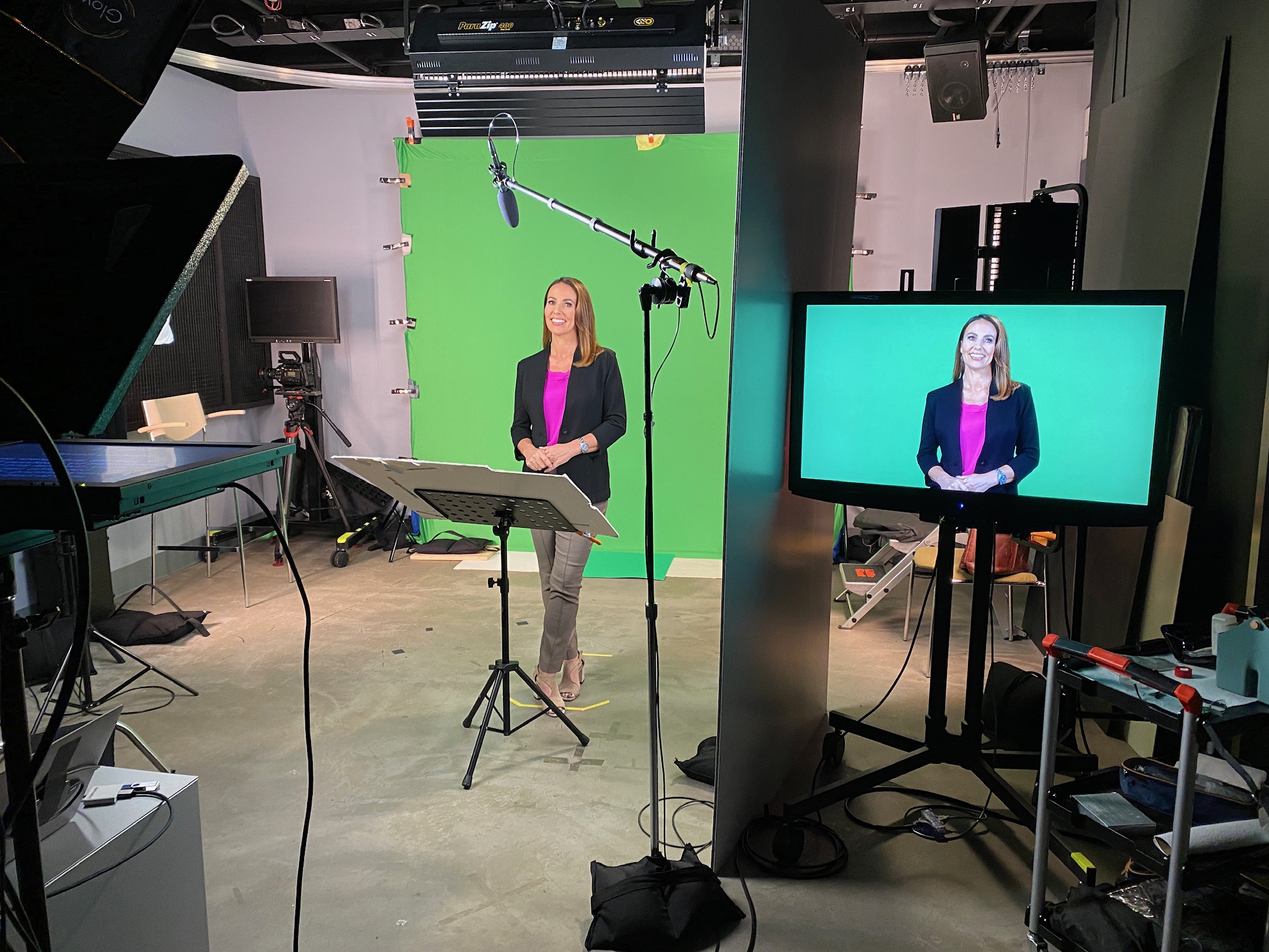 I once wore a beautiful, unique, colorful eight-strand necklace with tiny fluttering silver coins on live television. It was my great-grandmothers and is still a piece of jewelry I love. Never have I received so many viewer comments on something I was wearing. From “what was that jingling sound every time you spoke” to “your neck was so bright I had to wear shades”. I’m pretty sure none of those viewers actually heard what I was saying. They were too distracted.
I once wore a beautiful, unique, colorful eight-strand necklace with tiny fluttering silver coins on live television. It was my great-grandmothers and is still a piece of jewelry I love. Never have I received so many viewer comments on something I was wearing. From “what was that jingling sound every time you spoke” to “your neck was so bright I had to wear shades”. I’m pretty sure none of those viewers actually heard what I was saying. They were too distracted.
Whether you’re the type to ponder over every outfit you put on, or grab the first thing that’s clean in your closet, when it comes to appearing on camera it’s important to put a little time into what you’ll wear. Not only do you want to appear credible (and yes, your outfit can help or hurt your credibility), you also want to make sure what you’re wearing isn’t a distraction.
When I’m not on-camera or behind the microphone, I’m often behind the camera conducting interviews or coaching the on-camera expert. One of the questions I’m asked by almost everyone I work with is “what should I wear”? Your on-camera appearance absolutely makes a difference in how you feel on-camera as well as how you come across to your audience. By carefully selecting your wardrobe, considering your role, and paying attention to details like color, fit, and comfort, you can elevate your on-camera presence with confidence and style. Dressing professionally and appropriately while showcasing your unique personality will help you make a lasting impression on your viewers. Embrace your role, rock your outfits, and shine on camera!
Tip 1) Opt for Solid Colors:
Solid, bright colors are best on camera. Not only do they truly ‘pop’ and help you look more vibrant, but many cameras have a difficult time adjusting to a stark white blouse. As you can see by this recent shoot for a state agency that they chose bright blue and bright pink with solid color pants. One additional note on color: If you’ll be using a green screen, don’t wear green (unless you’re trying to play tricks on your viewers)! While we’re on the subject – avoid tight patterns as they too can be distracting for viewers and difficult for cameras to adjust to.
Tip 2) Consider Your Audience and Setting:
Think about the expectations of your audience and industry standards. If you are speaking as a business professional, a politician, or in any capacity where you might wear a tailored suit, blazer, or dress, make sure you’re dressed to fit the audience. For more casual settings or topics, choose well-fitted blouses, tops, or dresses that exude a put-together yet still comfortable vibe. For example, if you are talking about agriculture, don’t wear a suit and tie. Jeans and a nice top might be more appropriate (It goes without saying, but jeans without holes aren’t usually a great idea, unless it’s a fashion shoot and they’re part of the wardrobe). If you’re a scientist shooting video in a laboratory, wear a lab coat. If you’re a student walking through campus, carry your backpack. Dress for the setting and environment you’re in as your outfit can lend credibility, whether or not the viewer is even aware of it.
Tip 3) Fit and Comfort matter!
Wear something you are comfortable in. You’ll have plenty of other things to be thinking about while the camera is rolling. Don’t let your outfit be one of them! Choose something you feel good in and try it on in advance to make sure it fits properly, it’s clean and pressed, and you have any necessary accessories or undergarments to go with it. While you’re at it, you may want to consider what you’ll be doing. If you’ll be sitting the entire time, does your outfit still look good (and do your socks, if you’re wearing them, not stand out)? If you’ll be walking through grass, a field or anything soft, don’t wear heels that might sink!
Tip 4) Less is more!
Accessories can be a powerful tool to enhance your on-camera appearance, but they should be used judiciously. Avoid excessive jewelry or accessories that create unnecessary noise or cause distractions (see note above about my great-grandmother’s beautiful but loud and oddly reflective necklace). Opt instead for subtle pieces that complement your outfit without overpowering your presence.
Don’t wear too much makeup. High-definition cameras used by professional videographers pick up everything. Too much makeup doesn’t hide flaws … it simply looks like you’re wearing too much makeup! Instead, focus on shine control. Lights can make the shine more noticeable, so yes, men … you should consider wearing some powder as well (and don’t sweat it … it’s very common on video shoots).
Remember, we live in a visual world. Your on-camera appearance can play a huge role in how your viewers respond to what you have to say. Wearing the right outfit can make it easier for your audience to connect to your message and consider you a credible source for delivering it. At the end of the day, you want viewers to remember what you had to say … not the fact that the floral pattern on your blouse looked like it was radiating on camera. One final note about appearance: always remember – one of the best additions to a great outfit, is a genuine smile.
Until next time…
Kristen
Recent Comments